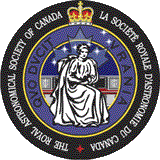|
| |
June 2005
Scott Mair
If you want to make a kid angry, tell them
Pluto is not a planet. For kids there is no controversy -
Pluto is definitely a planet.
There's some argument among astronomers though. The Adler
Planetarium at the American Museum of Natural History in New
York City created a lot of controversy a few years ago by
excluding Pluto from the planets hanging in their lobby.
The reason some astronomers want to exclude Pluto is because
its not like the other planets. First, doesn't orbit the Sun
in the same plane as the rest of the planets. In the night
sky it's way off the ecliptic, the line the sun, moon and
all the other planets cross the sky. Its orbit is also
highly eccentric - that's astronomer speak for very oval in
shape. All the other planets are pretty close to a circle.
In fact, Pluto's orbit is so elliptical that for part of its
journey around the sun its not the farthest 'planet' out
there. Only after 1997 did Pluto get out past Neptune.
Pluto also looks weird; all of the other planets beyond the
asteroid belt are gas giant planets, but Pluto is a little
ice ball with a moon half as big as it is!
Its clear that Pluto didn't' form like all the other
planets; from a disk of spinning gas that also created the
sun. Astronomers consider Pluto to be the largest (so far)
member of the Kuiper Belt - a zone of very distant, icy
rocks that formed on the edge of the solar system - hundreds
have been discovered so far and there is probably millions
more out there.
It depends what you call a planet - if its something that
circles a sun then Pluto's a planet and so are all the
asteroids and comets and ... If a planet had to form from
the primordial spinning gas of the young sun, that might
leave Pluto out.
I don't care. Its fun to look for Pluto and this month we
have the best opportunity to see it in my lifetime. It won't
be easy though. Pluto is a magnitude 13 object - that's dim.
We can only see up to magnitude 6 with our eyes. You'll need
at least a 6 inch telescope to find it. If you're up to the
task the serpent's tail is the constellation to point your
telescope. If you're lucky you'll see what Clyde Tombaugh
first saw 75 years ago.
|
